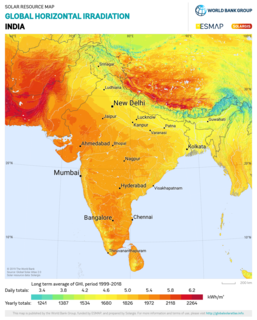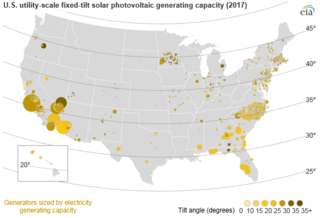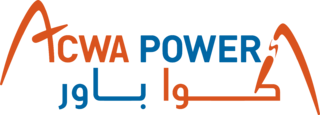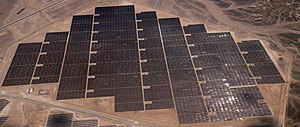
Southern California Edison, the largest subsidiary of Edison International, is the primary electricity supply company for much of Southern California. It provides 15 million people with electricity across a service territory of approximately 50,000 square miles. However, the Los Angeles Department of Water and Power, San Diego Gas & Electric (SDG&E), Imperial Irrigation District, and some smaller municipal utilities serve substantial portions of the southern California territory. The northern part of the state is generally served by the Pacific Gas & Electric Company of San Francisco. Other investor-owned utilities (IOUs) in California include SDG&E, PacifiCorp, Bear Valley Electric, and Liberty Utilities.

The AES Corporation is a Fortune 500 company that generates and distributes electrical power. AES is headquartered in Arlington, Virginia, and is one of the world's leading power companies, generating and distributing electric power in 15 countries and employing 10,500 people worldwide.

Many countries and territories have installed significant solar power capacity into their electrical grids to supplement or provide an alternative to conventional energy sources. Solar power plants use one of two technologies:

Solar power in India is a fast developing industry. The country's solar installed capacity was 36.9 GW as of 30 November 2020.

Solar power is the conversion of energy from sunlight into electricity, either directly using photovoltaics (PV), indirectly using concentrated solar power, or a combination. Concentrated solar power systems use lenses or mirrors and solar tracking systems to focus a large area of sunlight into a small beam. Photovoltaic cells convert light into an electric current using the photovoltaic effect.

Solar power in the United States includes utility-scale solar power plants as well as local distributed generation, mostly from rooftop photovoltaics. As of the end of 2020, the United States had 97,275 megawatts (MW) of installed photovoltaic and concentrated solar power capacity combined. In 2018, utility scale solar power generated 66.6 terawatt-hours (TWh), 1.66% of total U.S. electricity. During the same time period total solar generation, including estimated small scale photovoltaic generation, was 96.1 TWh, 2.30% of total U.S. electricity. In terms of total cumulative installed capacity, by year end 2017 the United States ranked 2nd in the world behind China. In 2016, 39% of all new electricity generation capacity in the country came from solar, more than any other source and ahead of natural gas (29%). By 2015, solar employment had overtaken oil and gas as well as coal employment in the United States. In 2016, more than 260,000 Americans were employed in the solar industry.

Solar power in Japan has been expanding since the late 1990s. The country is a leading manufacturer of photovoltaics (PV) and a large installer of domestic PV systems with most of them grid connected. Japan has an insolation of about 4.3 to 4.8 kWh/(m2·day).
Morocco's energy policy is set independently by two agencies of the government: the Office of Hydrocarbons and Mining (ONHYM)which sets domestic oil policy, and the Office National de l'Electricité (ONE), which sets policy with regard to electricity. The two major weaknesses of the energy policy of Morocco are the lack of coordination between these two agencies and the lack of development of domestic energy sources.
Enviromena is the leading clean energy technology company in the Middle East and North Africa and Europe. With one of the broadest footprints of clean energy projects, spanning nine countries, the company has installed more than 17,000 solar systems and has the largest portfolio of solar rooftops in the GCC. The company has over 175 MW of solar power plants under operation and a further 500 MW under construction.

Energy in Jordan describes energy and electricity production, consumption and import in Jordan. Jordan is among the highest in the world in dependency on foreign energy sources, with 96% of the country's energy needs coming from imported oil and natural gas from neighboring Middle Eastern countries. This complete reliance on foreign oil imports consumes a significant amount of Jordan's GDP. This led the country to plan investments of $15 billion in renewable and nuclear energy. To further address these problems, the National Energy Strategy for 2007-2020 was created which projects to boost reliance on domestic energy sources from 4 per cent to 40 per cent by the end of the decade.

A photovoltaic power station, also known as a solar park, solar farm, or solar power plant is a large-scale photovoltaic system designed for the supply of merchant power into the electricity grid. They are differentiated from most building-mounted and other decentralised solar power applications because they supply power at the utility level, rather than to a local user or users. The generic expression utility-scale solar is sometimes used to describe this type of project.

Solar power in Morocco is enabled by the country having one of the highest rates of solar insolation among other countries— about 3,000 hours per year of sunshine but up to 3,600 hours in the desert. Morocco has launched one of the world’s largest solar energy projects costing an estimated $9 billion. The aim of the project is to create 2,000 megawatts of solar generation capacity by the year 2020. Five solar power stations are to be constructed, including both photovoltaic and concentrated solar power technology. The Moroccan Agency for Solar Energy (MASEN), a public-private venture, has been established to lead the project. The first plant will be commissioned in 2015, and the entire project in 2020. Once completed, the solar project will provide 38% of Morocco’s annual electricity generation.

Africa is often considered and referred as the "Sun continent" or the continent where the Sun's influence is the greatest. According to the "World Sunshine Map", Africa receives many more hours of bright sunshine during the course of the year than any other continent of the Earth: many of the sunniest places on the planet lie there.
In 2018 Chile produced about 7% of its electricity from solar power. As of year end, it had 2137 MW of solar PV capacity. In July 2020 installed solar capacity had risen to 3104 MW, with another 2801 MW under construction.

Ouarzazate Solar Power Station (OSPS), also called Noor Power Station is a solar power complex located in the Drâa-Tafilalet region in Morocco, 10 kilometres (6.2 mi) from Ouarzazate town, in Ghessat rural council area. At 510 MW, it is the world's largest concentrated solar power plant. With an additional 72 MW photovoltaic system the entire project is planned to produce 582 MW at peak when finished. It is being built in three phases and in four parts. The total project's estimated cost is around $2.5 billion.

ACWA Power is a developer, investor, co-owner and operator of a portfolio of power generation and desalinated water production plants currently with presence in 10 countries including in the Middle East and North Africa, Southern Africa and South East Asia regions. ACWA Power’s portfolio, with an investment value in excess of USD 33 billion, can generate more than 22 GW of power and produce 2.5 million m3/day of desalinated water to be delivered on a bulk basis to state utilities and industrial majors on long term off-take contracts under Public-Private-Partnership, Concession and Utility Services Outsourcing models (BOO/BOOT).
Quweira Solar Power Plant is a 103 MW photovoltaic power station in Quweira, Jordan. As of 2018, it is the largest solar power plant in the region. It was inaugurated on 26 April 2018, as part of Jordan's long-term plan to diversify its energy resources.















